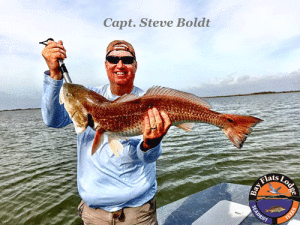
Along our coastal regions of Texas, the month of February has been known to bring us some of the absolute coldest days of the entire year. That brings up a very crucial topic for this month – the importance of proper clothing. When it turns cold this month, the number of anglers out on the water will drastically be reduced simply due to the weather. February anglers will often enjoy a lot of peace and quiet, which also means they might be on their own for a long time in the event they might need some assistance for whatever reason. Experiencing an emergency while on the water can be tough enough without being cold, being wet, or being cold and wet. For this reason it is recommended you dress in layers, and take extra clothing on your next trip. You can always remove layers if you get too warm, but you can’t put on that which you don’t have. Just food for thought!
You should allocate more time than usual during February when scanning your wintertime fishing spots before you spend valuable time anchoring and exiting the boat. Once you’ve pulled into an area, use the first few minutes to examine the immediate area for baitfish activity, looking primarily for pods of baitfish (preferably mullet). You won’t always see the heavy bait action that you commonly see during warm months of the year, so learn to look for other signs like surface or tail swirls, slicks, diving seagulls, or any other kind of bird that looks like they may be simply sitting on the water. Those are all potential signs that a fish is eating, or has recently eaten, so pay close attention to the water’s surface.
Experienced coastal anglers know that a muddy bottom structure retains more heat than that of a sandy bottom, so anglers should search for trout in deeper water that’s lined with soft mud whenever it turns really cold this month. In these cold, muddy places you will need to work your artificial baits really, really slow because the trout tend to be especially lethargic in extremely cold water. Other places to pursue February trout are muddy areas along shorelines, coves, protected bayous, channels, and any other drainage-type places that feed water in or out of back lake spaces. And on those rare occasions of a high tide in February, make it a point to hunt for baitfish activity in some of the more remote regions of the back lakes while focusing your attention on the windward shorelines of the lakes.
With water clarity being another important factor, you may want to throw bright-colored baits in clear water, and dark colors in dirty water. Regardless, whenever targeting big February trout, try using some of the slow-sinkers like the Corky and the Fat Boy. Top waters have also produced well in February, so it won’t hurt tossing a wide variety of colors, but smaller sizes. Be warm, be safe, and have fun out there!
Capt. Chris Martin
Bay Flats Lodge, Inc.
1.888.677.4868
